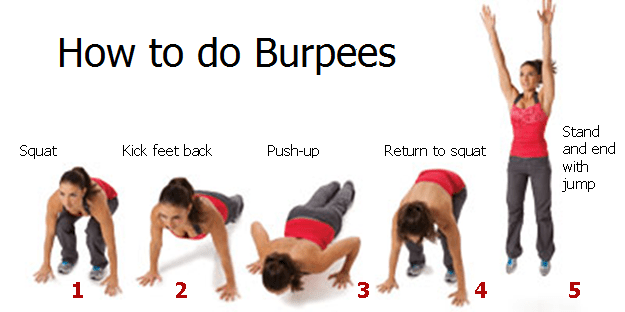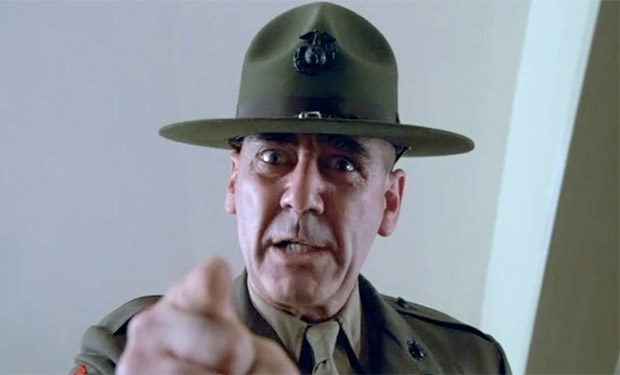use the time to let my body recover a bit, and this trip seemed like a good interlude. Before I left, I wrote some notes to myself about things that I wanted to pick up with my training when I got back...things like adding burpees back into my workouts more regularly, doing more sprint work while running, such as hill repeats, fartleks, etc. Some of this stuff I'd done 30 years ago in high school, and it worked then...so, employed judiciously, there's no reason why it shouldn't work now, right?
Once I got back, I started getting back into the swing of things.
So, I did my first Pyramid of Pain workout since returning...the exercises for this pyramid were:
Burpees x 3
Pull ups x 1
Sit up x 1
 The sit ups aren't just straight sit ups...they're a sprinter sit up, but with my hands up closer to my head. I do not lace my fingers behind my head because I don't want to start pulling my head forward. Also, after I had finished my sit ups at each level, I'd do two V-sits. When I finish pyramid work outs, I will do rounds of push ups, pull ups, and sit ups...this time, there was only one additional round. There will be more in upcoming work outs.
The sit ups aren't just straight sit ups...they're a sprinter sit up, but with my hands up closer to my head. I do not lace my fingers behind my head because I don't want to start pulling my head forward. Also, after I had finished my sit ups at each level, I'd do two V-sits. When I finish pyramid work outs, I will do rounds of push ups, pull ups, and sit ups...this time, there was only one additional round. There will be more in upcoming work outs.
For this pyramid work out, I repeated level 10, so the totals were:
330 burpees
110 pull ups
110 sit ups
I'm doing more burpees for a couple of reasons. One, they're a great exercise, and you can do them anywhere. I like (well, like may not be the right word) to not only do them before or during a gym workout, but they're great to do while I'm out running...I can stop and do 10, 15, or more burpees, and then go on. Two, I'm signed up for the DC Spartan Sprint as well as the VA Super Spartan, and I usually end up doing burpees on the spear toss. Also, I tend to run these events with someone, and will do burpees with them if they miss an obstacle.
I'm also adding more chin ups to my work out, because they simulate the grip used on a rope climb much
better than a pull up. I'm still doing pull ups, weighted (40 lb work out vest, or hold a 25 lb dumbell between my feet) and unweighted, too...all of this also helps develop my grip. In addition, doing pull ups with my hands at shoulder width simulates the grip used for the Tough Mudder's Funky Monkey, as well as the Savage Race's monkey bars...that saw-tooth in the middle adds a level of difficulty that catches a lot of people.
Last night, after work I went for a run...and tried to work in some fartleks. I could still feel some tightness in my calves from my burpees, but I warmed up a bit before I got started. The air was a bit warmer than it has been in a while, and I found myself breathing a bit easier. I had purposely intended to wait until it got warmer in the morning, but by the time I got out from under what I was working on, it was around the time kids got home from school. I felt really good on the run, and spend most of it in the grassy areas, making sure to run on uneven surfaces. Yes, of course it was much easier to run on the sidewalk or road, but I'm not looking for easier. I was also sure to do hill work...running up and down and back up even some short, albeit steep, hills. The reason for this is that a LOT of the these events include some hill work and on the last Tough Mudder, we saw a lot of people falling by the wayside due to overuse strains in their calves and the backs of their legs.
Overall, great run.
better than a pull up. I'm still doing pull ups, weighted (40 lb work out vest, or hold a 25 lb dumbell between my feet) and unweighted, too...all of this also helps develop my grip. In addition, doing pull ups with my hands at shoulder width simulates the grip used for the Tough Mudder's Funky Monkey, as well as the Savage Race's monkey bars...that saw-tooth in the middle adds a level of difficulty that catches a lot of people.
Last night, after work I went for a run...and tried to work in some fartleks. I could still feel some tightness in my calves from my burpees, but I warmed up a bit before I got started. The air was a bit warmer than it has been in a while, and I found myself breathing a bit easier. I had purposely intended to wait until it got warmer in the morning, but by the time I got out from under what I was working on, it was around the time kids got home from school. I felt really good on the run, and spend most of it in the grassy areas, making sure to run on uneven surfaces. Yes, of course it was much easier to run on the sidewalk or road, but I'm not looking for easier. I was also sure to do hill work...running up and down and back up even some short, albeit steep, hills. The reason for this is that a LOT of the these events include some hill work and on the last Tough Mudder, we saw a lot of people falling by the wayside due to overuse strains in their calves and the backs of their legs.
Overall, great run.











